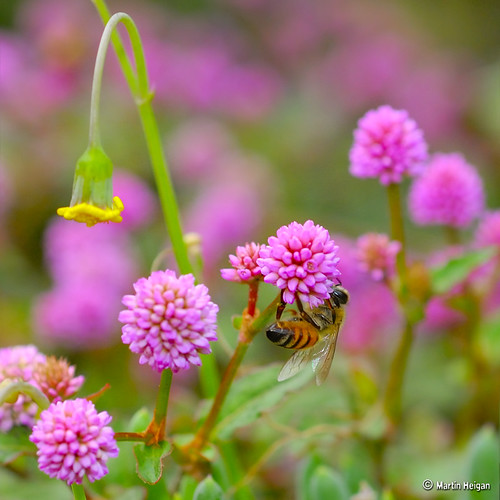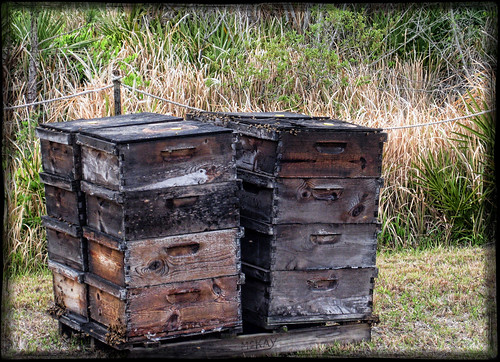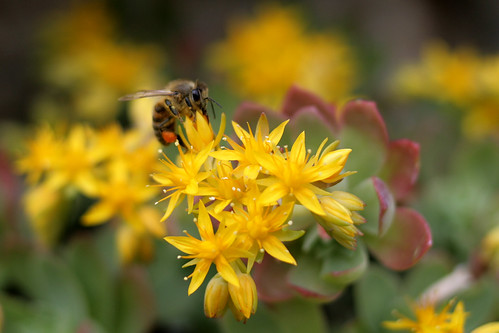
Bee pollinating a flowering ground cover by Martin_Heigan
I have read that it has been calculated that one out of every three to four mouthfuls of food we eat and beverages we drink is delivered to us by pollinators. There are thousands of native pollinators. I believe the figure is something like 20,000 worldwide. See here.
Because of the dwindling honey bee population (honey bees are nonNative to the US), everyone must do as much as one can to insure that we do not lose our native pollinators. Those in the US and around the world are also dying off because of pesticides being used. See here. To insure that TheGardenLady readers help the native pollinators, this post is about some things you can do.

Pollinated! by Durotriges
The week of June 21st through June 27th was National Pollinator week.
There is an organization called Pollinators. org that encourages people around the world to create a pollinator habitat in your garden, school, farm, etc. This site will tell you which plants in the US zones will attract these beneficial insects. If you are from out of the US perhaps you could email the Pollinator.org site to find out if they can recommend a similar organization in your country.
TheGardenLady finds that many of the plants in the mint family or herbs are especially attractive to pollinators in her garden. For example, one would never try to smell any of the oregano, lavender, agastache, or monarda flowers for fear of inhaling some type of pollinator- mostly bees- they are so prolific. Though I have only seen 2 or 3 honeybees, I see hundreds of other bees sucking up nectar in a frenzy and covered in pollen. Pollinator.org has free Pollinator friendly Planting Guides for your area of the US and you can join the Pollinator Partnership. I hope TheGardenLady readers do join and do your part in saving pollinators.
A reader from Chicago found an exciting pollinator on his echinacea plants. See here.








